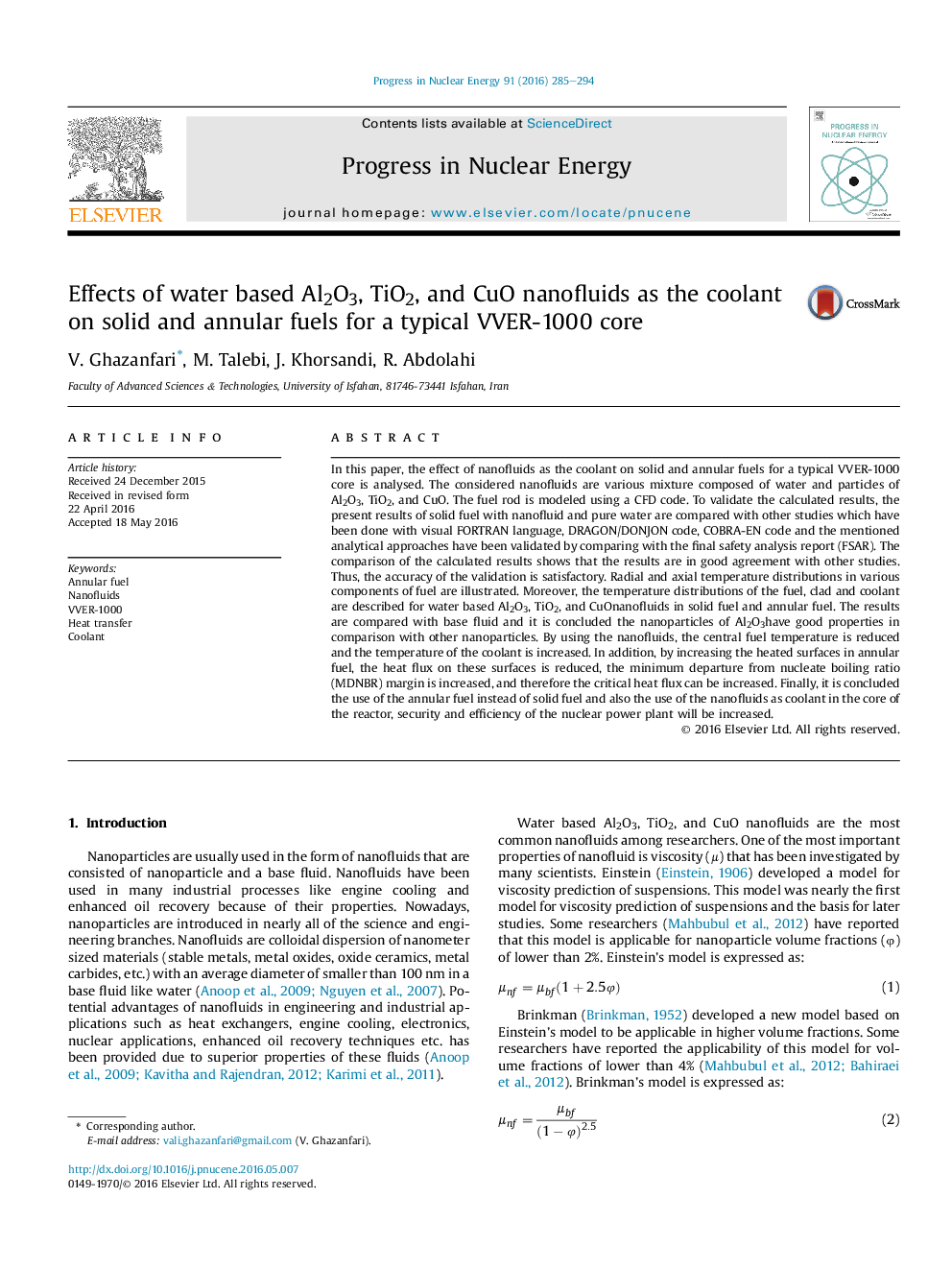| Article ID | Journal | Published Year | Pages | File Type |
|---|---|---|---|---|
| 8084920 | Progress in Nuclear Energy | 2016 | 10 Pages |
Abstract
In this paper, the effect of nanofluids as the coolant on solid and annular fuels for a typical VVER-1000 core is analysed. The considered nanofluids are various mixture composed of water and particles of Al2O3, TiO2, and CuO. The fuel rod is modeled using a CFD code. To validate the calculated results, the present results of solid fuel with nanofluid and pure water are compared with other studies which have been done with visual FORTRAN language, DRAGON/DONJON code, COBRA-EN code and the mentioned analytical approaches have been validated by comparing with the final safety analysis report (FSAR). The comparison of the calculated results shows that the results are in good agreement with other studies. Thus, the accuracy of the validation is satisfactory. Radial and axial temperature distributions in various components of fuel are illustrated. Moreover, the temperature distributions of the fuel, clad and coolant are described for water based Al2O3, TiO2, and CuOnanofluids in solid fuel and annular fuel. The results are compared with base fluid and it is concluded the nanoparticles of Al2O3have good properties in comparison with other nanoparticles. By using the nanofluids, the central fuel temperature is reduced and the temperature of the coolant is increased. In addition, by increasing the heated surfaces in annular fuel, the heat flux on these surfaces is reduced, the minimum departure from nucleate boiling ratio (MDNBR) margin is increased, and therefore the critical heat flux can be increased. Finally, it is concluded the use of the annular fuel instead of solid fuel and also the use of the nanofluids as coolant in the core of the reactor, security and efficiency of the nuclear power plant will be increased.
Related Topics
Physical Sciences and Engineering
Energy
Energy Engineering and Power Technology
Authors
V. Ghazanfari, M. Talebi, J. Khorsandi, R. Abdolahi,
